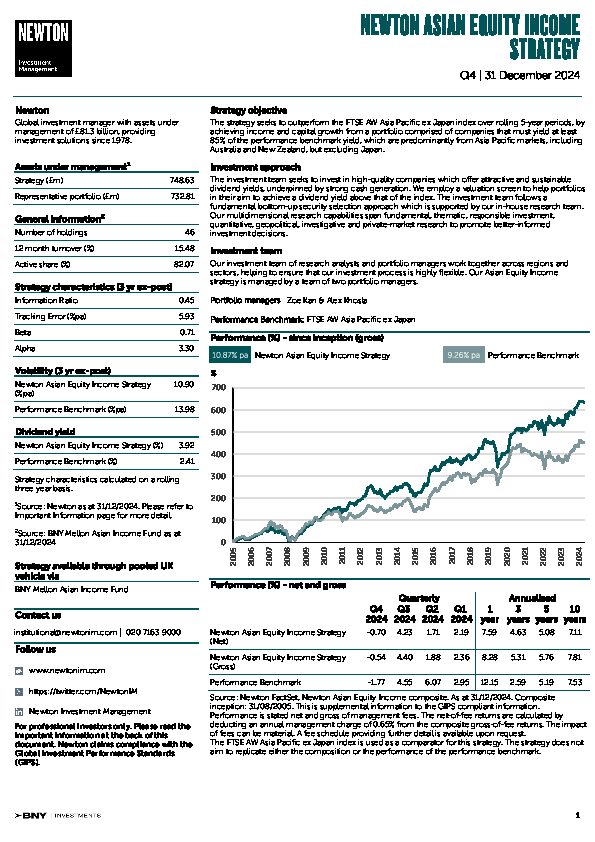Strategy profile
-
Objective
-
The strategy seeks to outperform the FTSE AW Asia Pacific ex Japan index by more than 2% per annum over rolling 5-year periods by achieving income and capital growth from a portfolio comprised of companies that must yield at least 85% of the performance benchmark yield, which are predominantly from Asia Pacific markets, including Australia and New Zealand, but excluding Japan.1
-
Performance benchmark
-
FTSE All World Asia-Pacific ex Japan2
-
Typical number of equity holdings
-
40 to 70
-
Yield discipline
-
Every new holding must have a prospective yield of at least 85% of the yield achieved by the performance benchmark. Any holding whose prospective yield falls below a 40% discount to the yield achieved by the benchmark will be sold. On account of liquidity, it may not be possible to dispose of an entire holding immediately.
-
Strategy inception
-
Composite inception: 1 September 2005
-
Strategy available through pooled UK vehicle
-
BNY Mellon Asian Income Fund
View fund performance
View Key Investor Information Document
View prospectus -
-
1 The target stated is for indicative purposes only and may be changed without notice. Targeted return is generally aspirational in nature, is not based on criteria and assumptions, and is not a guarantee of future returns.
2 The FTSE All World Asia-Pacific ex Japan index is used as a comparator for this strategy. The strategy does not aim to replicate either the composition or the performance of the performance benchmark.
Investment team
The strategy is managed by an experienced team with a wide range of backgrounds. In-house research analysts are at the core of our investment process, and our multidimensional research capabilities help to promote better-informed investment decisions.
Your capital may be at risk. The value of investments and the income from them can fall as well as rise and investors may not get back the original amount invested.









